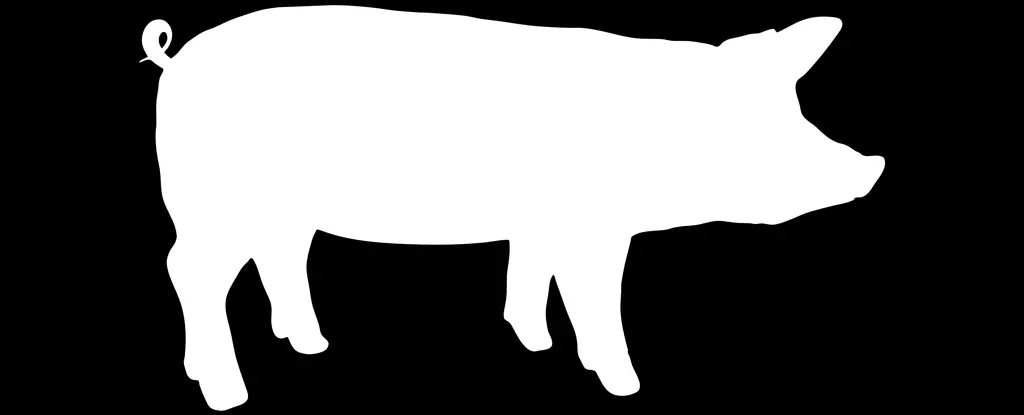Recent developments regarding avian influenza, particularly the A/H5N1 strain, have raised significant alarm bells within both scientific and agricultural communities. The United States Department of Agriculture’s detection of this virus in a pig on a small Oregon farm illustrates a worrying evolution in the virus’s capacity to infect a broader array of hosts, including not just birds but also terrestrial mammals. This case marks a pivotal moment in understanding the dynamics of A/H5N1, a strain that has already exhibited its potential for wide-ranging ecological disruption and economic damage across farming operations.
Historically, avian influenza viruses have predominantly affected birds, with limited transmission capabilities among mammals and negligible risk to humans. However, the emergence of the clade 2.3.4.4b variant has shown that the landscape is changing. The fact that this strain has found its way into pigs signifies not only an expansion in host range but also implies a potential for genetic mixing that could facilitate a pandemic threat. Pigs act as “mixing vessels” for viruses due to their unique respiratory receptors that accommodate both avian and human influenza viruses, presenting an unprecedented risk.
One of the most pressing concerns surrounding A/H5N1 is its ability to mutate. The recent findings regarding mutations in A/H5N1 from infected humans indicate that the virus is not merely static but actively evolving. This adaptive capacity raises the specter of a virus that could transition from jumping between species to more efficient human-to-human transmission. The ideal scenario for such a transformation involves a “lock and key” mechanism, whereby the virus’s receptor binding preferences could shift towards human cellular structures, making it more adept at breaching human immunity.
Research in the field has begun to highlight specific mutations that could catalyze increased transmissibility. Pigs, historically less susceptible to the A/H5N1 strain, have shown a concerning trend in the virus’s ability to infect them, resulting in an immediate increase in surveillance measures. If A/H5N1 were to establish itself in commercial pig farms, the implications for public health could be dire, especially as seasonal flu cases begin to climb during winter months.
Beyond the immediate implications for human health, the impact of avian influenza on agriculture cannot be overstated. Infected poultry must be culled, leading to significant economic losses for farmers and potential shortfalls in food supply chains. Furthermore, with the recent infection of dairy cattle and pigs, we see a pattern of increasing potential hazards leading to contamination of dairy and meat products. While pasteurization could ensure that milk remains safe for consumption, the processes involved in agricultural production and animal husbandry present many points where the virus can disrupt the food supply.
The farming community is at a palpable risk, with over 400 herds affected in 14 states as of 2024. Protecting the agricultural sector from this evolving threat warrants proactive and coordinated responses, as future incidences could lead to larger economic ramifications, food scarcity, and reliance on international markets to fill the gaps left by outbreaks.
Effective early detection systems are vital in mitigating potential outbreaks of A/H5N1 and other influenza viruses. The U.S. and global health authorities must ensure that robust surveillance mechanisms are in place, focusing on wildlife monitoring and reporting from farms. The EPIWATCH system, which seeks early indications of unusual respiratory illnesses, represents a forward-looking approach that could provide essential insights into emerging threats, significantly speeding up vaccine development.
Moreover, the need for rapid testing for influenza strains within human populations cannot be overstated. Governments must prioritize the capability to sub-type influenza A strains efficiently, enhancing surveillance to differentiate between seasonal flu infections and novel strains that may pose pandemic risks. The recent lag in anomalies relating to human infections worldwide serves as a cautionary tale about the consequences of delayed diagnostics.
In light of ongoing concerns about human transmission from animals, effective public health messaging and support for farms to promote early reporting of infections are critical. Financial incentives and assistance are necessary for farmers to foster a culture of transparency, aiding in rapid responses to outbreaks.
Despite the mounting risks associated with A/H5N1, there is a silver lining: advancements in vaccine development for influenza suggest that we may be better positioned than during past pandemics. Current vaccine technologies can be adapted quickly to respond to novel strains by updating them in accordance with the pandemic virus genome. Finland’s initiative to vaccinate high-risk farm workers showcases a proactive approach to protecting vulnerable populations against the threat of zoonotic diseases.
Conversely, while the U.S. Centers for Disease Control and Prevention currently assesses the risk to the general public as low, vigilance is key. Given the extensive spread of A/H5N1 across multiple animal species, the probability of a pandemic appears to be increasing. By fostering global cooperation and refining our pandemic preparedness protocols, we can significantly mitigate the risks posed by evolving strains of influenza. The imperative lies not only in preparing for the next pandemic but in cultivating a comprehensive understanding of interspecies viral transmission dynamics to safeguard both public health and global food security.


Leave a Reply